Shelly asked me to run some qPCRs (GitHub Issue), after some of the qPCR results I got from primer tests with normalzing genes and potential gene targets.
Primers used:
| SRID | Primer_Name |
|---|---|
| 1769 | APLP_FWD |
| 1768 | APLP_REV |
| 1773 | TIF3s8_FWD-1 |
| 1772 | TIF3s8_REV-1 |
- TIF3s8 is expected to be used as a normalizing gene.
The cDNA being used will be samples made by Kaitlyn on 20200212. Samples used are those lined up towards the top of the sample box. It’s unclear to me why there are some samples in 0.5mL tubes and others in 1.7mL tubes:
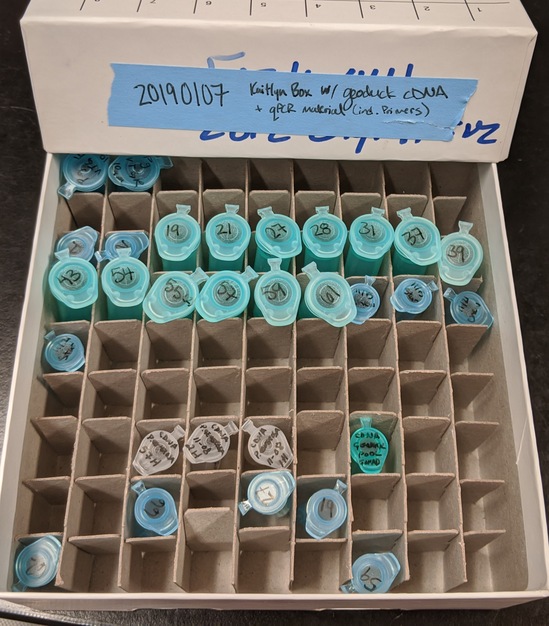
Positive control was pooled cDNA, created by combining 2uL from each of the following:
- 11-08 1H (made by me from 20191125)
- 11-08 2H (made by me from 20191125)
- 57H (made by me from 20191125)
- 11/15 Chew (made by Kaitlyn, no date on tube)
- 11/21 Star (made by Kaitlyn, no date on tube)
All qPCR reactions were run in duplicate. See qPCR Report (Results section below) for plate layout, cycling params, etc.
Master mix calcs are here:
- 20200806_qPCR_geoduck_APLP_TIF3s8 (Google Sheet)
RESULTS
qPCR Report (PDF):
CFX Data File (PCRD):
CFX Results File (CSV):
Plot color legend:
APLP: BLACKPositive control: GREENNo Template Controls: RED
APLP Amplification plots
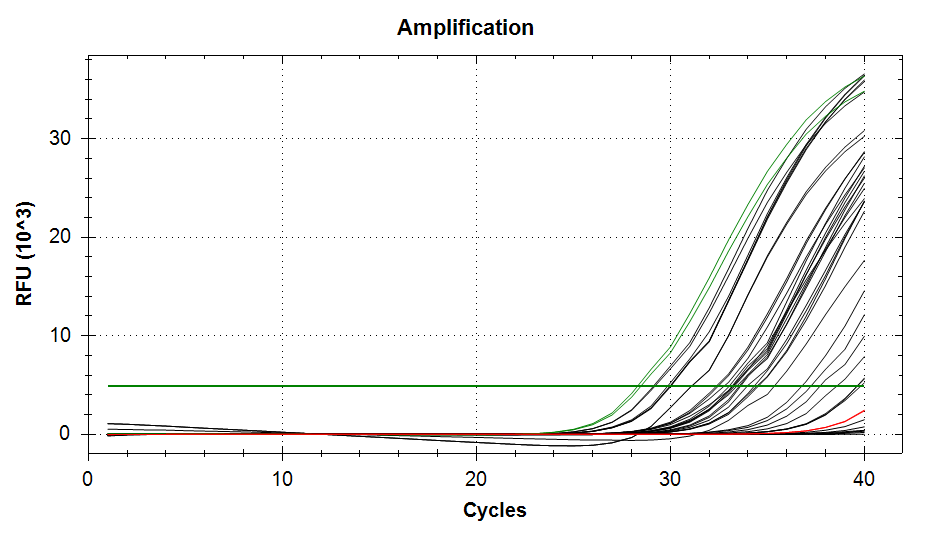
APLP Melt curves
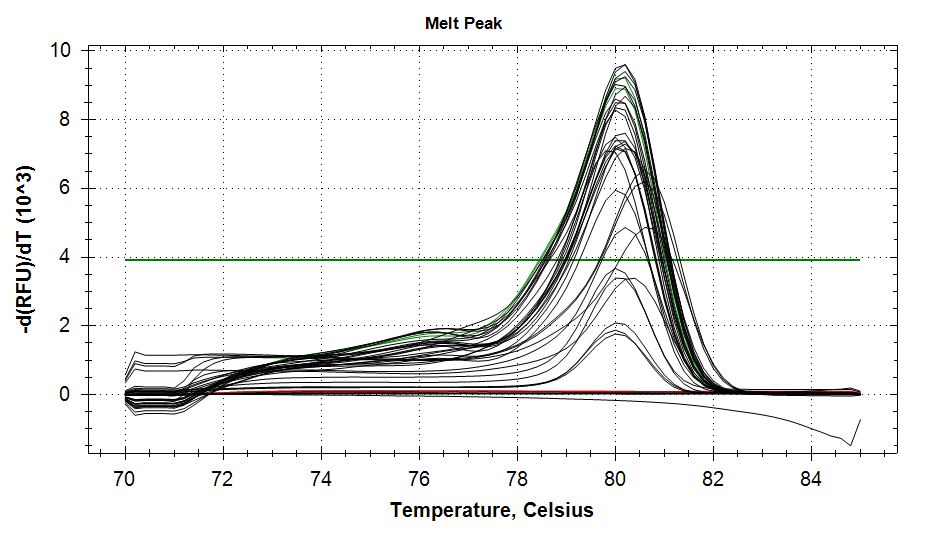
Plot color legend:
TIF3s8-1: ORANGEPositive control: GREENNo Template Controls: RED
TIF3s8-1 Amplification plots
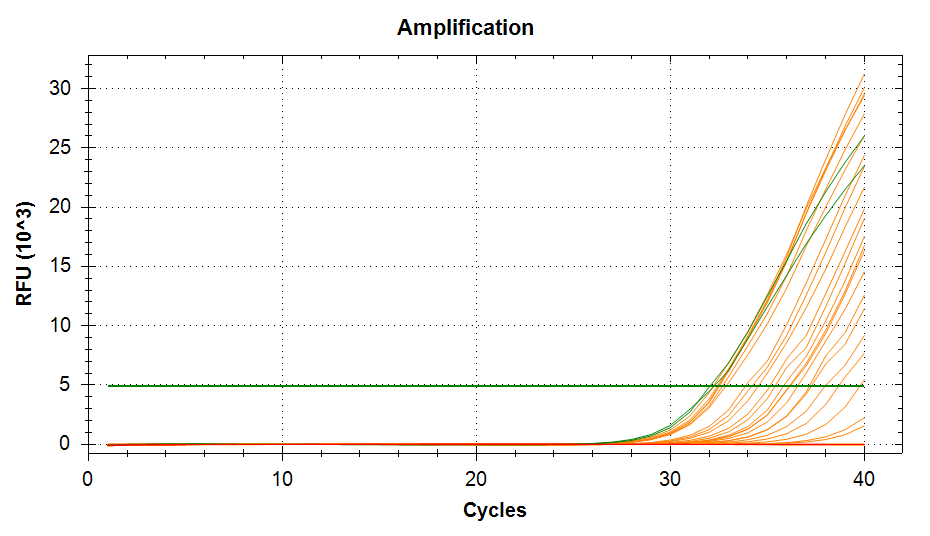
TIF3s8-1 Melt curves
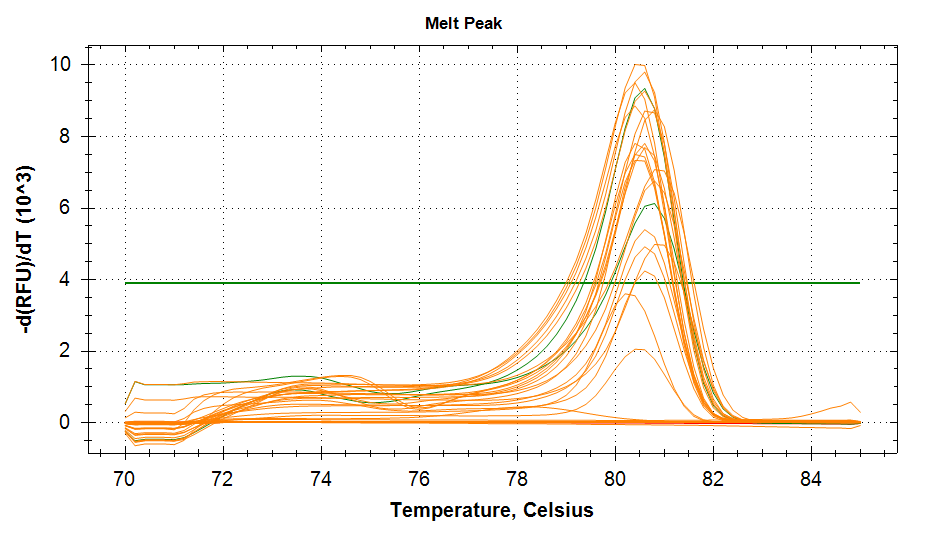
Overall, the data itself looks fine. There are a few samples here and there where the replicates aren’t great; primarily those that amplify very late (>37 Cq). This isn’t terribly unusual, but as a mild perfectionist, it annoys me.
However, upon some brief analysis, it’s clear that using TIF3s8-1 as a normalizing gene will not work. It fails to amplify in the majority of samples. Cross-checking with the results of APLP amplification in those same samples shows that APLP did amplify in most of those same samples; thus ruling out an issue with the samples themselves.
Will let Shelly know and will probably come up with a plan for identifying new normalizing gene targets.